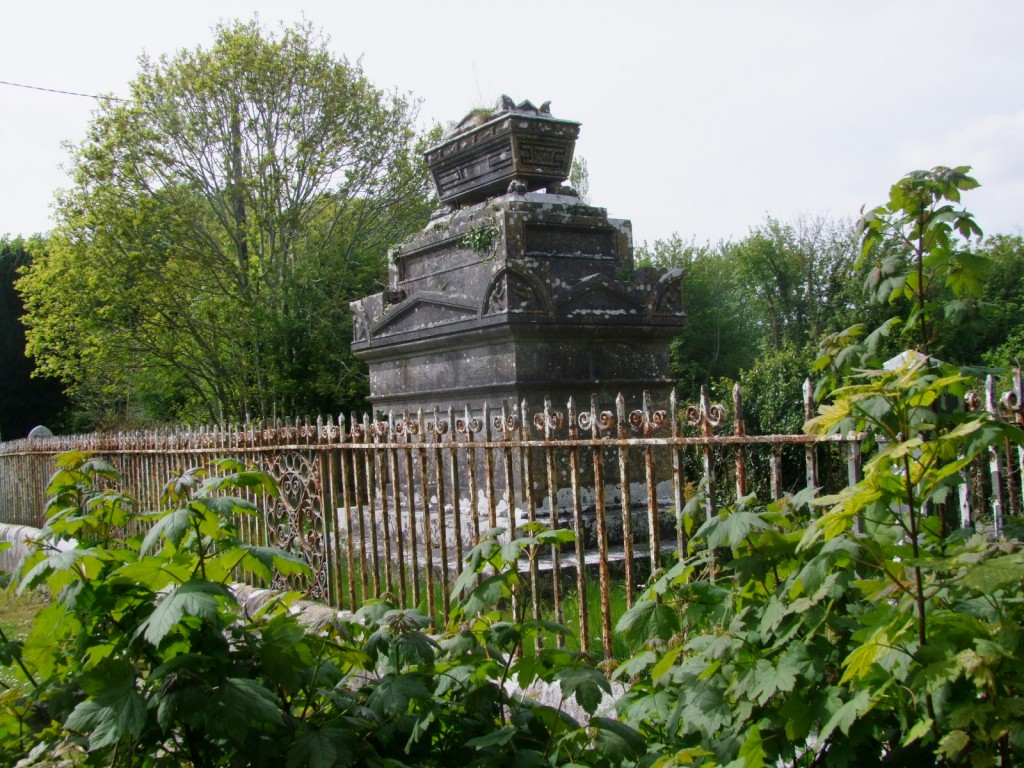
Kieran’s Our City, Our Town, Cork Independent, 8 July 2010
In the Footsteps of St. Finbarre (Part 219)
Memories and Hidden Corners
“I am influenced by the existence of an invisible world within nature where there are elusive processes, transformations and interactions of phenomenae. Inspiration is drawn from often overlooked, everyday environments, shadows, atmospheres, trails and hidden corners” (Lucey Dawe Lane, Fractals Exhibition, June 2010, Crawford College Art and Design)
A journey to the annual Crawford College of Art’s graduate exhibition offers the viewer new ways of not only seeing art but ways of seeing everyday and ordinary views one takes for granted. I feel that Lucey’s quote above sums up some of my own key feelings on St. Peter’s Church. There are many treasures to reflect on here, which the column has been investigating in the last number of weeks. However, I am also taken by the idea that the exploration of the hidden corners of heritage are as important as mainstream histories.
St. Peter’s Church is alive with images and Christian symbolism that informs my own experience of the space, how I photograph it, walk around it slowly and how even how I sit in the beautifully carved pews. Indeed, over the altar arch, the inscription invites one to “worship the Lord in the beauty of holiness”. There is an enormous thread of beauty and nostalgia running through the building. The church is a place which grabs you, draws one in – it connects one to an ideology.
Light hitting the small brass plaques on the pews flicker names of people who sat there and tell of a past social order in operation within the pews – it reflects on a different age where the pews were a type of private property, for the exclusive use of specific individuals or families, or linked to particular properties. In a paper by Spencer Thomas in the Journal The Local Historian, published by the British Association for Local History in 2009, he notes that churches were not commonly furnished with permanent pews before the coming of the Protestant Reformation. The rise of the sermon as a central act of Christian worship, especially in Protestantism, made the pew an indispensable item of church furniture. Gradually the pews came into existence and in the period between 1600 and 1800, when everything was about social stature, pews were also used to distinguish between the various social classes. Classes of higher strata only had the opportunity to sit in the pews closest to the pulpit.
In St. Peter’s the brass plaques list the following: police, clergymen, officers of Ballincollig Gunpowder Mills and families such as the Pratts of Gawsworth, Pratts of Beechmount, Austins, Coopers, Chadwicks, and family members of Carrigrohane Lodge, Kitsboro, Rock Lodge, Rockrohan, Mount Desert, Roseanna, Carrigrohane Castle, Leemount and Parknamore.
A collection of plaques on the walls of the central part of the church illuminate other key names associated with the church and highlight the human memory within the building. One plaque remembers Robert Pratt, J.P. of Gawsworth, Carrigrohane (1835-1910). He was son of Major Henry Pratt, 58th Regiment. The plaque was erected by his widow Anna Maria, daughter of Austin Cooper Chadwick of Damerville, Co. Tipperary. Another plaque recalls Richard Henderson Fetherstonhaugh, second son of Theobald Fetherstonhaugh of Newtown, Moate, Co.Westmeath, who died in 1902. Margaret was the wife of Captain William Harris who died in 1847, aged 51. The plaque was erected by her son John Harris.
Another inscription on a plaque highlights Lieutenant General Vere Hunt Bowles, Colonel of the Manchester Regiment who died at Patti in 1904. The plaque also highlights his wife Ellen Anne who died in 1911. It was put up to commemorate the twenty years the couple worshipped in the church under the ministry of Chancellor Dobbin.
Mary Hennessy of Millhouse Carrigrohane died in 1936. The plaque was erected by her son Sir Patrick Hennessey. Helena was the wife of Patrick Persse Fitzpatrick from Shrubs Co. Dublin. She died in 1821, aged 31. John Colthurst of Carrigrohane is also remembered. He is recorded as Lieutenant Colonel of the City of Cork Militia who died in 1839 aged 74 years.
On the baptismal font in the centre of the church, a brass plaque remembers Mary A. McGovern who died in 1937, aged 92 years. At the back of the church, a plaque on the wall immortalises Major John Doyle of the 72nd Highlanders, who died in Ballincollig in 1853, aged 68. On the right hand side wall (facing the altar), Ebenezer Pike of Hertfordshire, formerly of Kilcrenagh, Carrigrohane, who died in 1931 is remembered. Perhaps, the most sentimental of plaques was erected by G. Dolmage, a surgeon of the 8th K.R.I. Hussars in memory of his wife Julia, who died in Ballincollig in 1847, aged 29 years. He speaks through the plaque of his young wife being taken early from him, leaving children and leaving him an “afflicted husband”. However, this a hidden corner of St. Peter’s where this sad marker seems to highlight that even in the past, humanity was also important. This plaque for me is also powerful in animating, colouring and breathing further life into the physical human fabric and historical text of St. Peter’s sites as a site of memory within the Lee valley.
To be continued…
Captions:
547a. Murphy family plot in graveyard of St Peter’s Church, Carrigrohane (pictures: Kieran McCarthy)
547b. Detail of pew head, interior of St. Peter’s Church
